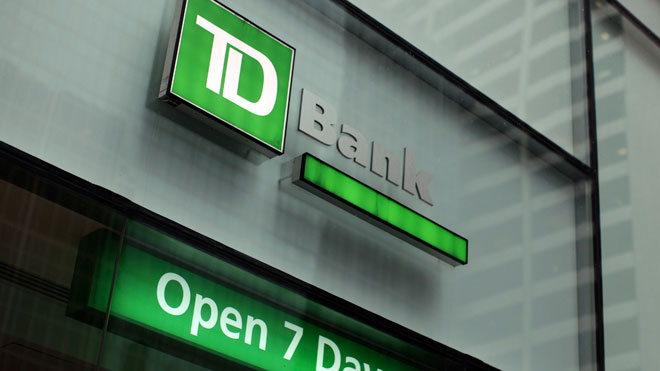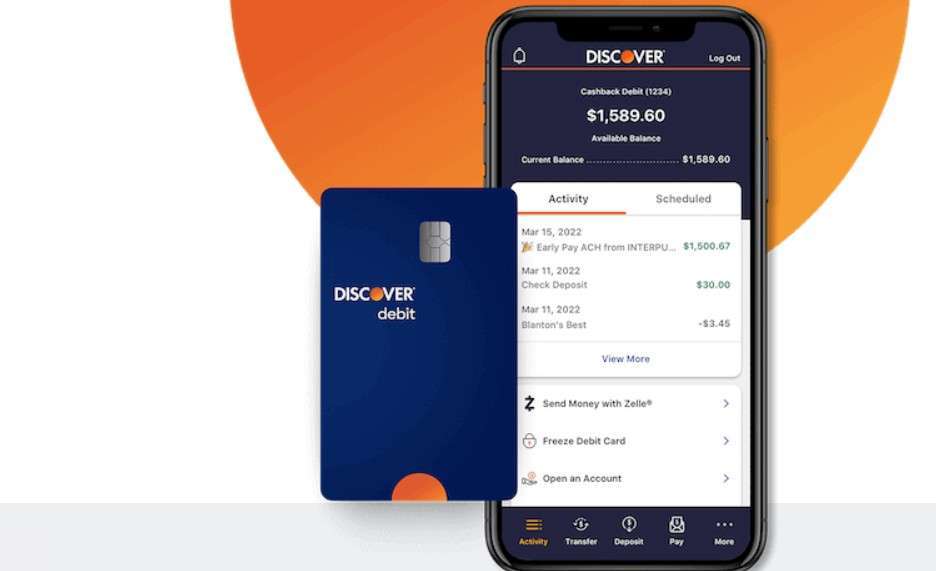Disclaimer: Information in the Business Financing Blog is provided for general information only, does not constitute financial advice, and does not necessarily describe Biz2Credit commercial financing products. In fact, information in the Business Financing Blog often covers financial products that Biz2Credit does not currently offer.
All small business owners would love to grow their businesses quickly. However, small business growth rarely comes easy. Small business growth statistics can be hard to nail down given just how many SMBs there are in the U.S., but the most recent data from the Small Business Administration (SBA) indicates that small businesses accounted for between 43.5% and 50.7% of the total U.S. GDP between the late 1990s and 2014. That indicates steady growth despite small business success rates not always being consistent across industries.
Your small business doesn’t need to double its profits every year to be successful. However, it does need to generate short-term growth to help navigate the inevitable economic downturns and business emergencies that arise in a small business’s journey. Fortunately, there are myriad effective small business growth strategies to help you overcome challenges, as we explore here.
Key Takeaways:
- Short-term growth can help businesses overcome immediate challenges and prepare for more major ones.
- Access to capital, identifying new opportunities, and matching up with competitors are all challenges to short-term growth.
- Focused market development, increased marketing efforts, strategic planning, and funding business ideas with loans are just a few contributing factors to a strong business growth plan.
Stages of Small Business Growth
Every small business grows in different ways, at different paces, but generally there are four business growth stages. Some businesses may not progress through all four, some may fly to the success stage with remarkable speed. Regardless, each presents unique challenges and it’s important to understand where your business stands in its journey.
- Startup Stage: In the first stage, a small business owner’s primary focus is simply setting up the business, figuring out the market, and devising small business growth strategies that may help secure some early promotion and income.
- Growth Stage: As the business stabilizes and generates enough cash flow to cover operating expenses, it is in the growth stage. The goal, then, is to progress beyond simply covering expenses to achieving consistent, rising profits.
- Maturity Stage: Many businesses don’t reach the third stage, which is characterized by the stability of having achieved a dominant position in the market. Surging sales and a strong, loyal customer base are great, but stability comes with expectations and challenges.
- Renewal or Decline: Maintaining constant growth is next to impossible for small businesses. Even a very successful business may experience periods of decline. In those times, it’s vital to breathe new life into the business with product development, marketing campaigns, sales strategies, and other tools.
6 Challenges in Small Business Growth and How to Solve Them
While there are virtually countless potential small business challenges there are also, as any business growth consultant will tell you, just as many, if not more solutions. These are some common small business growth challenges and potential solutions that may work for you.
- Access to Capital
A 2009 study by the Ewing Marion Kauffman foundation suggested that the average capital needed to start a business is $30,000. That’s a daunting number. However, there are myriad factors that go into how much you actually need. In fact, 33% of businesses in 2023 launched with less than $5,000.
Still, many entrepreneurs use their personal savings to start and grow a business, which may run out quickly. As they say, you need to spend money to make money, and a key element of small business growth is investing money in key areas to spur growth. Whether it’s hiring a new salesperson, buying new equipment to handle more jobs, investing in automation to streamline operations, or something else, you need money to grow.
Solutions:
Fortunately, there are many, many ways to access capital. It’s not exactly a small business growth hack, but business loans can be an outstanding resource for small businesses. Whether you’re interested in a term loan to support long-term growth or more flexible working capital loans or business lines of credit to help you navigate short-term obstacles or investments, there are a variety of financing options available to small businesses.
Banks, credit unions, and online lenders can make outstanding small business growth partners. From getting the capital you need to expand into a new market or increase production volume to navigating seasonal slowdowns in business, loans can be an excellent way to conquer short-term challenges.
Learn more about business loans and how to get the right one for your business here.
- Acquiring New Customers
One of the greatest challenges for any new business is simply finding people who want to buy your product or use your service. An important component of your business plan should be market research and identifying potential customers, but actually doing it is another matter. It’s a significant obstacle to growth and one of the most important ones to overcome quickly to give your business the short-term boost it needs to build some traction in the market
Even a new business likely already has potential customers in mind; otherwise, it wouldn’t have launched. Now, you just have to reach them.
Solutions:
There are many small business growth tips to help you navigate this challenge and carve out a market share. A simple start is to build an online presence.
Your local market is likely your strongest target market when you’re just starting out, so it’s crucial to make appealing to nearby customers a major part of your digital marketing strategy.
Social media advertising, content marketing, email marketing, and paid ads can all target potential customers to not only help you acquire new ones but also gather data to determine future target audiences and potential strategic partnerships.
Data or insights you might have from your current customers about your existing products can help your business identify and capture that next growth opportunity.
Moreover, one of the smartest small business growth hacks is leveraging local SEO. Did you know that 46% of Google searches are local? Millions of people use the World Wide Web every day to find businesses in their own neighborhoods.
Yes, a brick-and-mortar business has the benefit of drawing in some foot traffic after it opens, but most small businesses focused on selling products or delivering services don’t have that benefit.
By building a Google Business profile and claiming accounts on review sites like Yelp!, you make your business more visible and can gather first-person testimonials to raise the legitimacy and trustworthiness of your business.
- Customer Retention
Every business is always trying to acquire new customers, but retaining them is even more important. The famous small business growth quote states that it’s five times more expensive to acquire a new customer than to retain an existing one. Good customer relationships are extremely valuable.
As your small business grows its customer base, you’ll have higher operating costs to support those additional customers. A well-functioning business uses the consistent revenue from its existing market to cover the cost increases associated with growth, while new customer acquisition supports revenue and profitability increases.
Customer acquisition and retention are constant challenges that may benefit from a range of short-term solutions to support long-term success.
You want to provide a product or service that both appeals to a wide range of potential new customers, and is so good that people want to use it over and over. For instance, if you run a cleaning service, one of the everyday challenges you’ll face in a highly competitive industry is turning one-time customers into weekly or monthly ones. Acquisition and retention are closely related in generating both short-term and long-term small business growth.
Solutions:
Retaining customers boils down to building customer loyalty. By providing a great product or service at a reasonable cost, you’ll always have a strong foundation to keep customers coming back. High quality customer service and marketing efforts like rewards programs are other strong strategic components to building sustainable customer loyalty.
There are many levers you can pull for short-term wins within this foundation. This is where great marketing and sales strategies come into play.
For instance, if your company has reached a point where it has a good number of returning customers, launching a rewards program should be a major event. Rewarding customer loyalty with discounts, free items, or exclusive offers is something uniquely appealing to your best customers.
Turning the program launch into a marketing campaign that builds engagement through social media, email, and other marketing channels will get more eyes on your business and renew interest. Not only are you spurring small business growth by reaching new customers with your public relations outreach, but you’re giving current customers a reason to come back more and more with an improved customer experience.
Customer loyalty programs can increase the lifetime value of your customers, and the launch of such a program can provide a short-term jolt to your business. This is just one example of how effective marketing strategies can provide short-term solutions to customer churn, seasonal downturns, and other growth challenges that small businesses face.
Staying engaged with your customers across channels to understand what they like about your business, what they don’t like, and what they want will give your small business a wealth of data to inform short-term marketing initiatives. From improving products and launching sales to networking events, collaborations with strategic partnerships, special product releases, and more, your creativity can create many solutions to business lulls.
- Employee Retention
Finding great talent is hard, keeping great talent is even harder. Small businesses don’t have the resources to compete with the biggest companies, especially when it comes to labor. Between June 2023 and June 2024 alone total compensation rose 4.2% in the American labor market.
That may seem like a small number, but it’s a significant increase for small businesses that need great employees to support growth. The best talent will seek the best compensation, and it’s difficult for small businesses strapped for cash to both hire new employees to support growth and retain great ones to maintain growth.
Solutions:
Business loans are again a good option when it comes to hiring new talent. Longer term loans can give you the capital necessary to hire a sales staff or marketing team to help build and expand a customer base. As your sales rise, you’ll be in better shape to pay back a loan in the long term.
As for retention, one of the best things small businesses can do is build an outstanding culture. While it’s difficult to compete with the compensation packages of large enterprise, you can offer perks like remote work, flexible hours, great benefits like long parental leave, as well as office perks like a fully stocked kitchen. If people love where they work and believe in the company, they’re more likely to take a little pay cut to stay there. It’s nice feeling part of something bigger than yourself, so develop strong corporate values and wear them on your sleeve.
The most essential small business growth alliance is between business owners and employees. You need each other to build something great, and happy employees are productive ones.
- Budgeting Effectively
Implementing proper financial reporting is absolutely crucial for all small businesses, but many fail to do so from the outset. Not only will accounting and bookkeeping help your business stay compliant with financial regulations, but it will help you navigate both long- and short-term financial goals. Budgeting effectively is one of the most difficult parts of small business growth because as your business grows, your financial situation becomes increasingly fluid.
Meeting customer demand requires additional costs, customer acquisition campaigns put more strain on the budget, increased revenues may allow you to hire new roles. The list goes on and on.
When your business grows, costs and revenues change constantly, so you must regularly assess the budget to ensure you’re allocating money effectively.
Solutions:
First and foremost, if your business doesn’t already have a dedicated accountant or accounting service, it’s vital to do so. Once you do, you can get the tools and technology you need to identify key metrics, accurately gather and report key performance indicators (KPIs), and establish reporting frequencies to understand your business’s financial health.
Strategic planning sessions set up around short-term goals or milestones will help your business stay agile. Whether you’re prioritizing your budget for a major product launch or expanding into a new market, frequent planning sessions will help you adapt to changes in the market and business environment and keep your budget up-to-date.
As you think about your long term plans, you may realize that your business needs a plan for diversification in order to stay competitive, or if you risk growing out of your current market. But in a short-term plan, you should normally focus on the existing business and how you can maximize your current operations without having to spend significantly more money.
For any short-term push, creating a budget roadmap will help you implement effective resource management. A detailed breakdown of your budget allocates money towards hiring and training employees, optimizing operational procedures, handling inventory and shipping logistics, and much more. The more thorough you are, the better you’ll be able to handle obstacles and create a template for other short-term growth pushes. Growth calls for diversifying and expanding your budget. It’s best to be prepared to do so.
- Balancing Growth and Quality
Small businesses succeed because they offer a great product or service. But when they bite off more than they can chew, that quality can quickly fall off. Many businesses have grown too fast too quickly, increasing market penetration only to struggle to meet the increased demand, or expanding into a new market only to find they can’t afford to increase production with the same quality.
Small business growth is all about balance, especially when you’re making short-term investments. Quality is what will keep customers coming back, but it’s not always easy to retain quality while growing the quantity of customers you serve.
Solutions:
The key to balancing growth and quality, quite simply, is patience. The average small business growth rate should be somewhere between 15-25% annually, so there’s no need to go all out to support as many customers as possible in your first year. Entering into new markets and producing new products to diversify market segmentation is all exciting, but you shouldn’t make these short-term investments without having a plan in place to ensure quality doesn’t fall off.
Your business may grow naturally at a sustainable pace based on the strength of your product or service. However, if you do want to spur some faster short-term growth, loans are a good way to ensure you can lean into small business growth while having the funds necessary to maintain quality.
Conclusion
Small business growth isn’t always linear and it’s rarely easy. New businesses, especially, face many immediate hurdles when entering the market. Most short-term challenges, however, have many solutions, no matter where your business is in its growth. From limited capital to maintaining quality as you grow, no challenge is too large for a small business to overcome, regardless of growth stage.
FAQs
Growth rates tend to vary across industries, but generally, a good target growth rate is between 15 to 25% annually.
Over the last three years, more than 16 million businesses were started, according to U.S. Census Bureau data. That’s an unprecedented rise.
There really isn’t a straight answer to how fast a small business can grow. The answer depends on the specific business, and how business owners manage to handle the increases in expenses, labor, production, and more complex small business problems that arise with growth.
In April 2024, the Small Business Optimism Index was 88.5, its lowest since 2012. This is due to myriad factors, including high inflation and interest rates. Still, many new businesses are opening doors and there are reasons to believe optimism will rise in 2025.
Learn about the Biz2Credit financing process
Publisher: Source link











